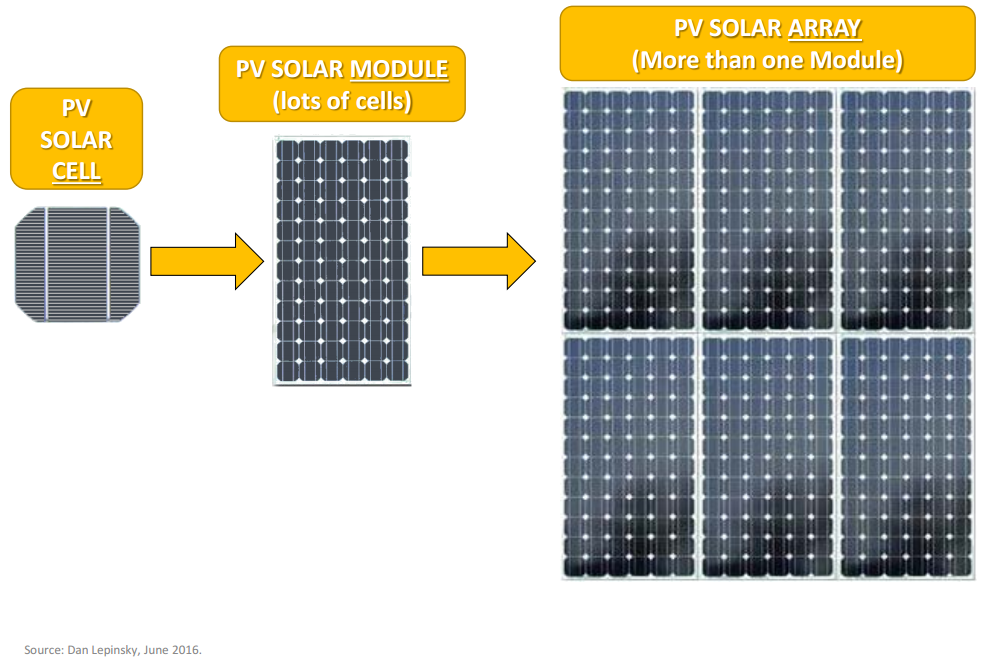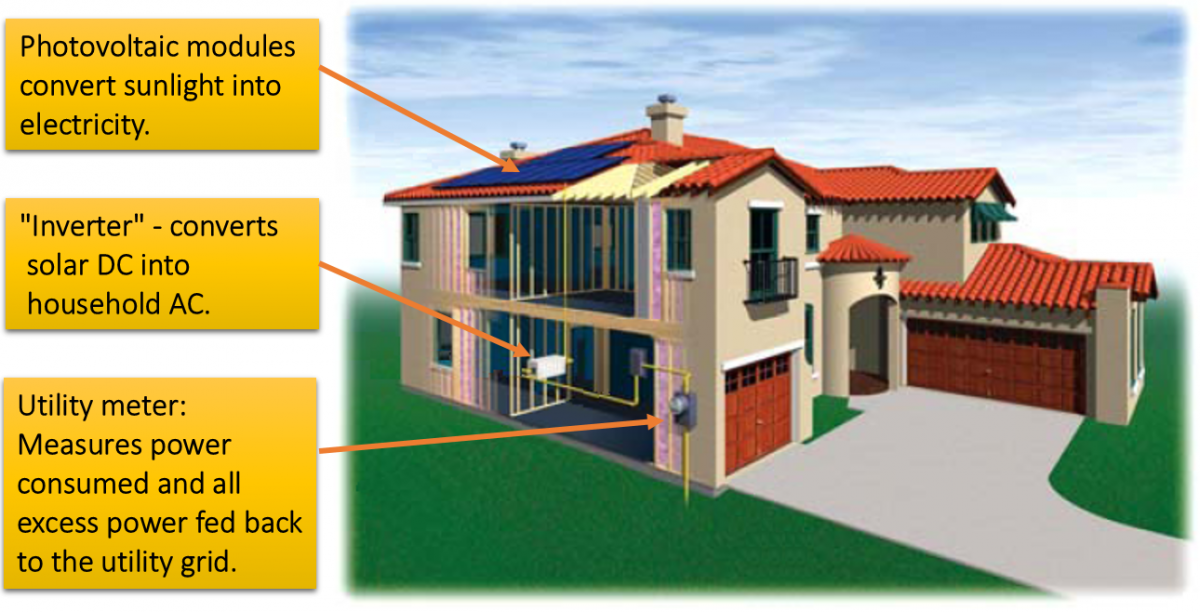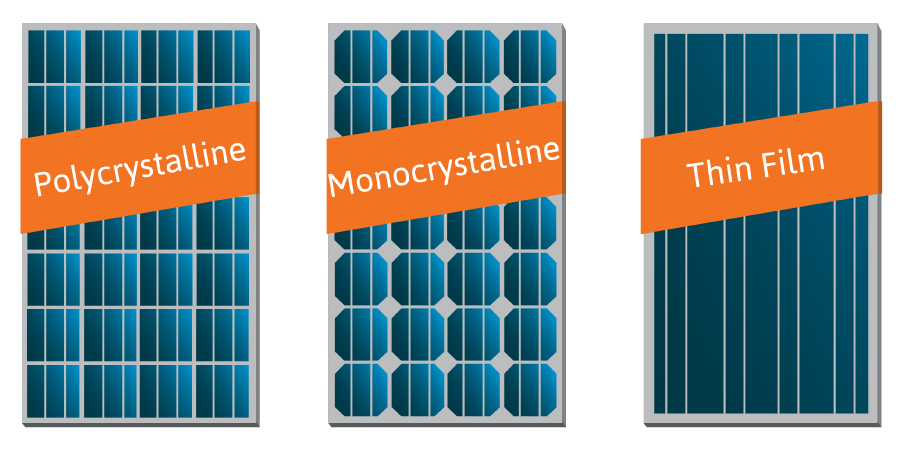Explore the sections below to find out more about solar equipment!
Photovoltaic Arrays Replacing an Existing Solar Energy System
Types of PV Panels Additional Information
Solar panels are actually more complex than meets the eye. Photovoltaic (PV) cells are the components that actually convert sunlight into electricity. These cells are arranged into PV modules, more commonly referred to as solar panels, which electrically connect all the cells to increase the total power output. Modules can be connected together to form a PV array.

PV-Direct Systems: These systems are the most simple because they neither include a battery nor are they connected to the utility grid. They can only produce electricity when solar energy is available.
Off-Grid Systems: These systems are not connected to the utility grid and generate all of the building’s electricity. Excess energy generated by these systems is stored in batteries and then subsequently used at night or in cloudy weather when solar energy is not available. Off-grid systems are largely used in areas without utility service. They require a battery bank, a charge controller, an inverter, and disconnects.
Grid-Tied Systems with Battery Backup: These systems function the same as an off-grid system except that they are connected to the grid. In the event that the system cannot provide enough energy through the PV system or the battery, the utility will supply power.
Batteryless Grid-Tied Systems (Grid-Direct, Grid-Interactive): Batteryless grid-tied systems are the most common PV application. These systems are connected to the utility power grid and use the utility grid as a backup source of power. If more energy is needed than is being generated by the solar PV system, the utility company supplies the difference. If more energy is being produced than needed, the excess flows backwards through the electrical meter to the utility company, where it is then used by others. These systems require inverters and required electrical safety gear.


Types of PV Panels
Single-crystal (monocrystalline) modules: These cells are the most efficient and most expensive PV cells because they tend to convert more sunlight energy to electricity than other types of PV cells. They are made of silicon and are cut from cylindrical ingots that resemble a large, round salami.
Multicrystalline (polycrystalline) modules: These cells are slightly less efficient that single-crystal cells. They are made of silicon cut from multiple crystals.
Thin-film modules: Thin-film PV modules have the lowest efficiency but are also lower in cost per watt of energy generated. They are manufactured using spray-on or print-on techniques, rather than forming cells from ingots or blocks of molten silicon. They are made from many types of metals including silicon, gallium, cadmium, tellurium, and copper.
Replacing an Existing Solar Energy System
Solar panels typically have a life span of about 30-35 years, maintain at least 80% of their initial power for at least 25 years. Weather related events, home improvements, system improvements and regular maintenance can all affect the performance and lifespan of the system. During this time you will likely be considering whether to keep your system, upgrade it, or replace it.
The Department of Energy's Solar Energy Technologies Office (SETO) provides guidance on how you can determine what options are best for your solar energy system as it ages. Information on this can be found on SETO's page Should I Replace my Rooftop Solar System?
Additional Information
For more information on solar equipment, visit the websites below!
American Solar Energy Society – Covers a variety of topics including how solar electric systems work, what PV cells are made of, and different versions of commercially available PV panels.
Solar Electricity Basics and Solar Electric System Types – Provides descriptions of different solar electric systems, including batteryless grid-tied systems, the most common type of residential system.
Small Solar Electric Systems – Provides an overview of the technical details of solar PV cells and modules, semiconductor materials, home solar system elements, and thin film solar cells.
National Center for Photovolatics at NREL – Explores cutting-edge PV research underway at the National Center for Photovoltaics at the National Renewable Energy Laboratory through an engaging video.
End-of-Life Management of Solar Panels - Contains information from the Solar Energy Technologies Office (SETO) on the importance of recycling solar panels as well as research into work being done to reduce its carbon footprint from its production to end of life.
